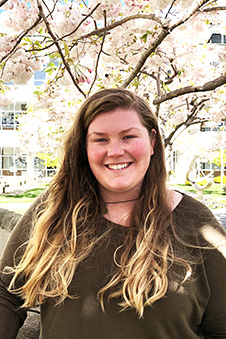Thursday 7 November 2019 10:06am
Science engagement at school continues to decline despite global issues being increasingly informed by scientific research and a growing need for more science-related careers.
However new evidence from a recently published University of Otago study in the Journal of Science Communication reveals promising results of re-engaging school students with science by producing, rather than consuming, their own science films.

Kaitlyn Martin
“When producing a scientific article, video, or exhibit you need communication skills, but you also spend a lot of time getting on board with the science content you’re communicating,” says Kaitlyn Martin, the paper’s lead author.
“At the Centre for Science Communication postgraduate students are trained to do this and I thought, why not at school?”
In her doctoral research, supervised by Professor Lloyd Davis and Associate Professor Susan Sandretto, the paper's co-authors, Miss Martin explored how producing science films on mobile devices can affect student engagement with science at school.
Four secondary school classes participated in the project to create a science film, to test the effectiveness of a simple, fast, easy-to-implement activity that any teacher could do.
Making science movies on mobile devices turned out to be an engaging approach for the students, especially for those who were turned off science due to an overwhelming amount of reading and writing activities.
“One group wanted to give a weather update on climate change from a turtle’s perspective. How creative is that? And this was the same group that had told me the day before that they weren’t science-kids.”
Miss Martin says this points to a unique feature of the study called agentic engagement, giving students the opportunity to take control of their learning.
Besides student engagement, making science films in the classroom also provided educators with unexpected benefits.
“What was fascinating was that teachers spent almost all of their time helping students with project management-type issues such as time management and how to work with others.”
By shifting classroom focus from purely science content, students were able to practice ‘soft-skills’ like communication and management as well as practice literacy and digital technology skills alongside their content learning.
“Creating bold, interesting, cross-curricular learning opportunities that foster all types of skills simultaneously is the way the New Zealand Curriculum was designed,” Miss Martin concludes.
“It is really challenging to make that goal a reality, but a project like this shows it can happen.”
Read the published open-access paper
For more information, contact:
Kaitlyn Martin
PhD Candidate
Centre for Science Communication
Email kaitlyn.martin@postgrad.otago.ac.nz
